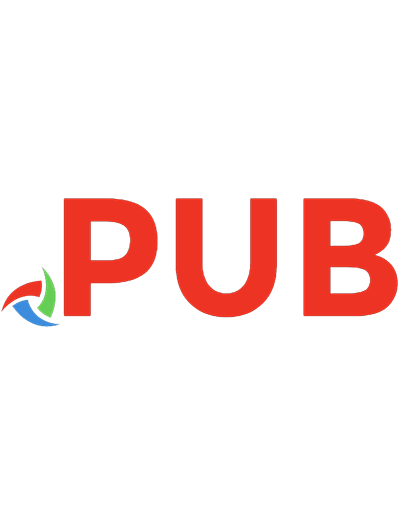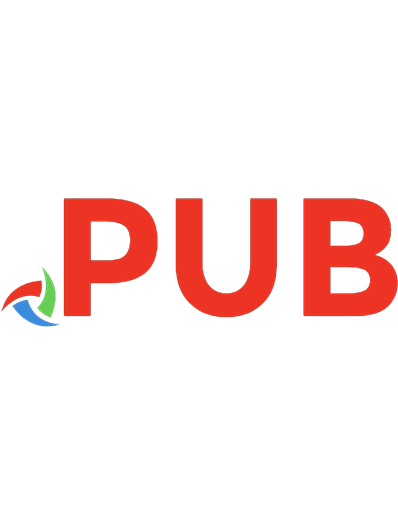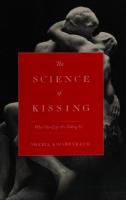The Science of Kissing: What Our Lips Are Telling Us
From a noted science journalist comes a wonderfully witty and fascinating exploration of how and why we kiss. When did
117 64 81MB
English Pages [278] Year 2011
Polecaj historie
Table of contents :
Contents
Preface
Introduction
Part One: The Hunt for Kissing's Origins
1. First Contact
2. Jungle Fever
3. Kiss My Past
4. Cultural Exchange
Part Two: Kissing the Body
5. The Anatomy of a Kiss
6. Women Are from Venus, Men Are Easy
7. Scent of a Man
8. Close Encounters
9. There Are Such Things as Cooties
Part Three: Great Expectations
10. This Is Your Brain on Kissing
11. The Open Lab
12. The Future of Kissing
13. The Right Chemistry
On the Science of Kissing
Acknowledgements
Bibliography
Index
About the Author
Citation preview
SCIENCE of
om oe
KISSING What Our Lips Are Telling Us SHERIL
KIRSHENBAUM
$19.99
($22.50 in Canada)
ok
humans the only animals who
kiss? Why is kissing integral to some cultures and alien to others? Do good kissers make better lovers? And is that expensive lip-plumping gloss worth it?
Biologist and science journalist Sheril Kirshenbaum tackles these questions and more
in THE
SCIENCE
OF KISSING.
She covers everything you always wanted to know about this near universal eyetea lees from the kind of kissing each gender prefers
to what animals can teach us about its origins to why kissing ran into trouble in the
Middle Ages. Kirshenbaum even goes into the lab to conduct her own studies, ave AA ing how our brains respond to kissing, and aotemnocel res nell surprise you.
Drawing upon evolutionary biology, classical history, psychology, popular culture,
and neuroscience, THE
KISSING
SCIENCE
OF
will forever change the way you
think and feel about this intimate act—and may even make you a better kisser//
JUNGLE
FEVER
~
27
ny
WOODS VANESSA PHOTO:
Bonobo kiss
The heartwarming story of Bandaka and Lodja represents a classic case of kissing behavior that demonstrates the way other animals express affection for similar reasons that we do—not surprising when you consider that humans and bonobos share about 98.7 percent of our DNA. Bonobos nurse by pouting their lips, much like human infants. Parents have further been observed to kiss-feed their young, and later in life, adults become avid openmouthed kissers. My favorite example from anthropologist Frans de Waal involves a zookeeper who innocently moved to accept a kiss of greeting from a bonobo and was astonished to feel a second tongue in his mouth! Just like us, bonobos kiss for a variety of reasons. Known as the most amorous of great apes, they often use
sex rather than aggression to resolve conflicts in their
32
~—
THE AUN
TOR KISSING’S
ORIGINS
protect them from parasites and dirt, so it behooves many same-species pairs to spend hours grooming a partner. Among mammals, one of the more uncomfortable “kisses” occurs in the elephant seal, a large marine animal that famously features an unusually long and bulbous nose. When an elephant seal wants to mate, he puts his flipper over the side of a female and grips her neck with his teeth. It’s not what we would consider the most romantic encounter, but apparently this works for the species. Lions, too,
tend to give what can only be described as a rather aggressive “love bite” during sex.
DEVOS NICOLAS PHOTO:
KISS MY PAST
~
39
© SPACE SCIENCE TELESCOPE INSTITUTE
NGC 6302, the Butterfly Nebula
Perhaps, then, the galaxy’s first “kiss” happened a very long time ago, and was made up of star stuff. Back here on earth, the human lip-print has been traced by classicists and anthropologists over a much shorter
period—merely a few millennia. The significance of kissing, its popularity, and its numerous modes have varied dramatically over this time, as have the cultural norms and social ' expectations of those involved. Many ancient kissing styles
THE ANATOMY
OFA
KISS
~
77
CREDIT: STUDIO WIM DELVOYE
Kiss 4 2000 125 X 100
Cibachrome on aluminium
Even as we're getting our heads aligned for a kiss, we also have to get our mouths ready—which means priming our facial muscles for action. The orbicularis oris muscle runs around the outside of our mouths, making it rela-
' tively easy to change the shape of our lips, especially when we're inclined to pucker up. Meanwhile, the zygomaticus
80
~
KISSING
IN THE BODY
brain—an area even more expansive than would be activated by sexual stimulation below the belt. This means our lips are our most exposed erogenous zone! To help get your mind around what this means, take a look at the sculpture below, which has been crafted to
reflect the relationship between each part of our body and the proportion of brain tissue dedicated to processing sensory information that comes from it:
© LONDON MUSEUM, HISTORY NATURAL THE
Sensory homunculus
In this image, the body surface is “mapped” to create a “brain’s-eye view.” As you can see, the lips and tongue look obscenely large compared with nearly every other feature, ©
160
~
GREAT EXPECTATIONS
subjects, I converted all the images from color to black-andwhite. While I won’t show you here all of the different images used in the study, here is a good example of what one of the “conditions”—female-female relationship—might have looked like:
SOTO ARIEL PHOTO:
Sample image to represent
“female-female committed relationship” Lp
And still, I wasn’t nearly finished setting the stage for our study of kissing in an MEG machine. For while I had my Own interpretations of what each picture conveyed, and what kissing “category” it belonged to, I wanted to ensure that a suitably large consensus existed among other people as well. After all, perhaps my “erotic” kiss was someone else’s “relationship” kiss.
Advance Praise for
SCIENCE-#¢
KISSING
“They say you never forget your first kiss—it sears itself into
your memory. THE SCIENCE OF KISSING will no doubt do something similar. From the neurology of smooching to practical tips on locking lips,
Sheril Kirshenbaum makes reading about this strange and fascinating practice almost as much fun as doing it."—SAM KEAN, New York Times bestselling author of The Disappearing Spoon
“Ifyou KCNameaten eu Conuatelemdam LaosCOme)Men EnTed will unweave the poetryof it, fear not. This engaging book, chockablock with eye-popping science and fun stories, not only makes for great reading but plumps up the pleasure of a smooch itself. You'll never think of kissing—what e.e. cummings called ‘a better fate than wisdom’ —in
the same Awe a Teen
—JENNIFER
ACKERMAN,
author of Ah-Choo! The Uncommon Life yeOe Common Cold and Sex Sleep Eat Drink Dream: A Day in the Life of Your Body
Ps heril Kirshenbaum gives you everything you wanted to know about this wonderful way we use our mouths. If you've ever wondered why we kiss under the mistletoe, or why two out of three people tilt their heads to the right when they zoom in for a kiss, Kirshenbaum will tell you, in a way that is witty, wise, and pucker- joietalesea —ROBIN
MARANTZ
HENIG,
writer, New York Times Magazine
aa
![The Science of Kissing: What Our Lips Are Telling Us [1 ed.]
978-0446559904](https://dokumen.pub/img/200x200/the-science-of-kissing-what-our-lips-are-telling-us-1nbsped-978-0446559904.jpg)









